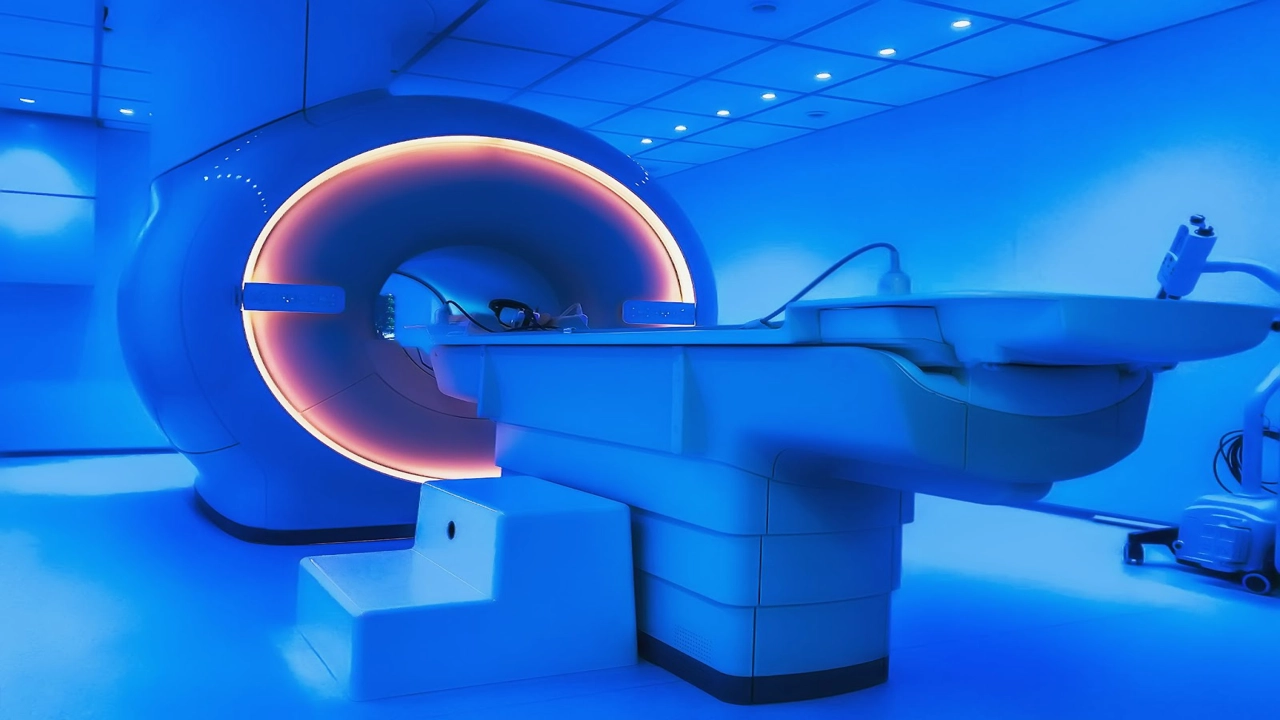Can mri show nerve damage discover now
Can an MRI show nerve damage? Magnetic resonance imaging, or MRI, excels at visualizing soft tissues like nerves. It provides detailed images of the spinal cord and peripheral nerves, revealing anatomical abnormalities that might indicate nerve damage. These abnormalities include swelling, compression, or changes in nerve structure.
MRI scans offer doctors a clear picture to diagnose a variety of nerve-related problems. Doctors interpret these images alongside patient symptoms to reach an accurate diagnosis. They look for signs of pinched nerves, inflammation, or other damage affecting nerve function. This helps to guide appropriate treatment plans.
mri scans nerve damage revealed
MRI scans and their ability to detect nerve damage are a common question. Many people search online asking, “can an MRI show nerve damage?” Understanding how this powerful imaging technique works and its limitations is key to interpreting results. Let’s explore this crucial topic in detail.
What is an MRI and How Does it Work?
Magnetic Resonance Imaging, or MRI, uses powerful magnets and radio waves to create detailed images of the inside of your body. Unlike X-rays, MRIs don’t use ionizing radiation. Instead, they measure the response of hydrogen atoms in your tissues to magnetic fields. This allows doctors to see the soft tissues of the body, including nerves, muscles, and ligaments, with remarkable clarity. This detailed view is crucial for diagnosing a wide range of conditions, including nerve damage. Can an MRI show nerve damage? The answer is often yes, but it depends on the type and location of the damage.
Can an MRI Show Nerve Damage? Direct and Indirect Signs
The ability of an MRI to detect nerve damage is nuanced. It doesn’t directly “see” a damaged nerve in the same way it shows a broken bone. Instead, it identifies indirect signs of damage. These signs include:
- Changes in nerve size and appearance: A compressed or swollen nerve might appear different on an MRI than a healthy nerve. An MRI can show if a nerve is being squeezed or if there is inflammation around it.
- Edema (swelling): Inflammation around a nerve can be detected on an MRI. This swelling can be a significant indicator of nerve injury.
- Changes in the surrounding tissues: Conditions that damage a nerve often cause changes in the tissues surrounding it. For example, a herniated disc pressing on a nerve root will be clearly visible on an MRI. This helps answer the question, “can an MRI show nerve damage?” in many cases.
- Loss of signal intensity: In certain situations, an MRI may show a loss of signal intensity in the nerve itself, suggesting damage.
Therefore, the question “can an MRI show nerve damage?” isn’t simply a yes or no answer. The scan shows the effects of the damage on the nerve and its surrounding structures, helping pinpoint the problem’s location and severity.
What Types of Nerve Damage Can an MRI Detect?
MRI excels in detecting certain types of nerve damage, but not all. Here are some examples:
- Peripheral neuropathy: MRIs can sometimes help identify the cause of peripheral neuropathy, such as compression from a tumor or bone spur. However, detecting the subtle changes in the nerves themselves that often characterize peripheral neuropathy can be challenging. Many people still ask, “can an MRI show nerve damage” related to this condition.
- Radiculopathy: Nerve root compression, often caused by a herniated disc or spinal stenosis, is readily visualized on an MRI. This is a significant application where the MRI clearly answers the question, “can an MRI show nerve damage?” affirmatively.
- Traumatic nerve injuries: After a significant injury, an MRI can show the location and extent of damage to a nerve.
- Tumors affecting nerves: MRIs are very useful for detecting tumors that are compressing or invading nerves.
Limitations of MRI in Detecting Nerve Damage
While MRIs are powerful tools, they have limitations when it comes to nerve damage:
- Subtle damage: MRI might miss minor or very early stages of nerve damage that haven’t yet produced significant structural changes.
- Certain types of neuropathy: Some types of neuropathy are purely functional and do not cause structural changes visible on MRI. This means an MRI may not provide clear answers to “can an MRI show nerve damage” in all situations.
- Need for expert interpretation: Radiologists need specialized training to interpret MRI scans accurately and identify subtle signs of nerve injury. The interpretation of the image is as crucial as the image itself when asking “can an MRI show nerve damage?”
Can an MRI Show Nerve Damage? Considering other Diagnostic Tools
An MRI is often just one part of the diagnostic process for nerve damage. Other tests might be necessary, such as:
- Electrodiagnostic studies (EMG/NCS): These tests measure the electrical activity of nerves and muscles, providing direct evidence of nerve function. This is complementary to the information provided by an MRI when you wonder, “can an MRI show nerve damage?”
- Physical examination: A thorough physical exam by a neurologist or other specialist is essential for assessing symptoms and neurological function.
- Blood tests: Specific blood tests might be needed to rule out certain causes of nerve damage, such as diabetes.
Combining these diagnostic tools usually gives a more complete picture than an MRI alone.
Can an MRI Show Nerve Damage? Focusing on Specific Locations
The answer to “can an MRI show nerve damage?” also depends on the location of the suspected damage. MRI is particularly useful for imaging nerves in the:
- Spine: MRIs provide excellent visualization of the spinal cord, nerve roots, and surrounding structures. They are often the primary imaging modality for evaluating back pain and radiculopathy, directly answering “can an MRI show nerve damage” in these cases.
- Extremities: MRIs can image nerves in the arms and legs, but visualizing smaller peripheral nerves can be more challenging. However, they are very good at identifying areas of compression or swelling affecting larger peripheral nerves.
- Brain: MRIs are incredibly useful for imaging cranial nerves within the brain, identifying compression, tumors, and other issues impacting these nerves.
The specific location significantly affects the ability of an MRI to detect nerve damage.
Can an MRI Show Nerve Damage? The Bottom Line
So, can an MRI show nerve damage? The short answer is a qualified yes. An MRI is a powerful tool that can provide valuable information about the presence of nerve damage by revealing indirect signs such as nerve compression, swelling, or changes in surrounding tissues. It is, however, not always definitive. Other tests are often necessary for a complete diagnosis. The type and location of the potential nerve damage, and the expertise of the radiologist interpreting the scan, all play a role in how effectively an MRI answers the question: “can an MRI show nerve damage?” Remember to discuss your findings with your doctor to understand the full implications of your MRI results and to receive a comprehensive diagnosis and treatment plan. Remember, while this information is helpful, it is not a substitute for professional medical advice. Always consult with your healthcare provider for any concerns about nerve damage or other medical conditions. Seeking their professional opinion is essential for a correct diagnosis and appropriate treatment.
mri scan nerve damage revealed
Understanding MRI Scans and Nerve Damage
Magnetic resonance imaging (MRI) scans are incredibly powerful tools for visualizing the human body’s internal structures. When it comes to detecting nerve damage, they offer unparalleled detail. Doctors frequently rely on the information revealed by an “mri scans nerve damage revealed” to diagnose and guide treatment for a wide range of neurological conditions. The high-resolution images provide crucial insights that other imaging techniques simply can’t match. This article will explore how these scans work in uncovering nerve damage.
What MRI Scans Show Us
An MRI scan uses powerful magnets and radio waves to create detailed cross-sectional images of your body. Unlike X-rays, MRI scans don’t use ionizing radiation. They’re particularly adept at distinguishing between different types of soft tissue, making them ideal for examining nerves, which are soft tissues. An “mri scans nerve damage revealed” can pinpoint the location and extent of nerve injury, showing features like swelling, inflammation, or compression.
Signs of Nerve Damage on an MRI
Several specific findings on an MRI suggest the presence of nerve damage. These include:
- Increased signal intensity: This indicates areas of inflammation or swelling within or around the nerve.
- Nerve thickening: An enlarged nerve might suggest an inflammatory or compressive process affecting the nerve.
- Nerve discontinuity: A break or tear in the nerve is a sign of significant damage.
- Loss of nerve structure: Changes in the nerve’s normal appearance, like a change in shape or size, can indicate damage.
- Compression of nerves: MRI scans can clearly show if a nerve is being squeezed or compressed by bone, tissue, or other structures. This is critical in diagnosing conditions like carpal tunnel syndrome.
Different Types of Nerve Damage Revealed by MRI
The type of nerve damage visible on an “mri scans nerve damage revealed” can vary considerably. MRI can show damage from:
- Trauma: Injuries like car accidents or sports injuries can cause significant nerve damage, readily detectable by MRI.
- Infections: Infections can lead to inflammation and damage to nerves.
- Tumors: Tumors pressing on nerves can cause compression and damage; MRI is excellent at detecting tumors.
- Metabolic diseases: Some metabolic conditions can affect nerve health and their appearance on MRI.
- Degenerative conditions: Conditions such as spinal stenosis can put pressure on nerves, showing clearly on an MRI scan. Searching “mri scans nerve damage revealed” for spinal stenosis will bring up relevant research.
Why MRI Scans are Important
An “mri scans nerve damage revealed” is crucial for several reasons. It helps doctors:
- Confirm a diagnosis: Suspected nerve damage needs confirmation, and MRI provides that visual evidence.
- Guide treatment: The specific location and extent of the damage guides treatment planning.
- Monitor progress: Doctors use repeated MRI scans to monitor the effectiveness of treatment.
- Assess prognosis: The severity of the nerve damage visible in “mri scans nerve damage revealed” helps in predicting recovery outcomes.
Further Exploration of “MRI Scans Nerve Damage Revealed”
If you’re searching online for information related to nerve damage and MRI scans, exploring queries like “mri nerve root compression,” “mri sciatica,” or “mri carpal tunnel syndrome” will yield valuable, detailed information. You’ll find numerous studies and articles explaining how “mri scans nerve damage revealed” in those specific conditions. Remember to always discuss your scan results with your doctor for a proper interpretation and personalized treatment plan. Further research into “mri scans nerve damage revealed in hands,” “mri scans nerve damage revealed in feet,” or “mri scans nerve damage revealed in legs” will help you find condition-specific information. Using such precise search terms improves the accuracy of your search results. You may find “mri scans nerve damage revealed spinal cord” information helpful as well.
Important Note: This information is for educational purposes only and does not constitute medical advice. Always consult with a qualified healthcare professional for any health concerns or before making any decisions related to your health or treatment.
Q&A: Can an MRI Show Nerve Damage?
Q1: Can an MRI scan detect all types of nerve damage?
A1: No. An MRI excels at showing damage to the structure of nerves, like swelling or compression. It might not always detect subtle or purely functional nerve problems.
Q2: What types of nerve damage does an MRI show well?
A2: MRI scans clearly depict nerve compression from things like bone spurs or herniated discs. They also reveal inflammation and damage related to conditions such as multiple sclerosis.
Q3: If I have nerve pain, will an MRI always find the cause?
A3: No. Sometimes, pain stems from issues an MRI can’t readily identify, such as nerve irritation without significant structural damage. Other tests may be necessary.
Q4: How detailed is the information provided by an MRI regarding nerve damage?
A4: An MRI provides detailed images of the nerves’ anatomy. Doctors use these images to assess the location, extent, and severity of any damage.
Q5: Is an MRI the only test used to diagnose nerve damage?
A5: No. Doctors often use a combination of tests, including nerve conduction studies and electromyography, to fully assess nerve function and pinpoint the problem.
Q6: What should I expect during an MRI scan for nerve damage?
A6: You will lie on a table that slides into a large magnet. The machine makes loud noises, so earplugs are usually provided. You must remain still during the scan.
Q7: Does an MRI scan use radiation?
A7: No. An MRI uses strong magnetic fields and radio waves, not ionizing radiation like X-rays.
Q8: Are there any risks associated with an MRI scan?
A8: The risks are generally low. People with certain metal implants may not be able to undergo the scan. Claustrophobia can be a concern for some individuals.
Conclusion
In short, MRI scans offer a powerful tool for visualizing many types of nerve damage. They excel at showing structural problems like compression or inflammation. While they may not always detect subtle changes or certain types of damage, they remain a vital diagnostic aid. Doctors use MRI results alongside patient history and other test results to reach a complete understanding of a patient’s condition and design the best treatment plan. Remember, this information is for educational purposes and should not replace advice from your doctor.
Ultimately, understanding the capabilities and limitations of MRI in detecting nerve damage empowers you to ask informed questions of your healthcare providers. We encourage you to share your experiences or thoughts on this topic in the comments below. Do you have any questions about MRI scans and nerve damage? Let’s discuss! Also, please help spread the word by sharing this post on your favorite social media platform. Your input and sharing will help others learn and understand this important health information.







